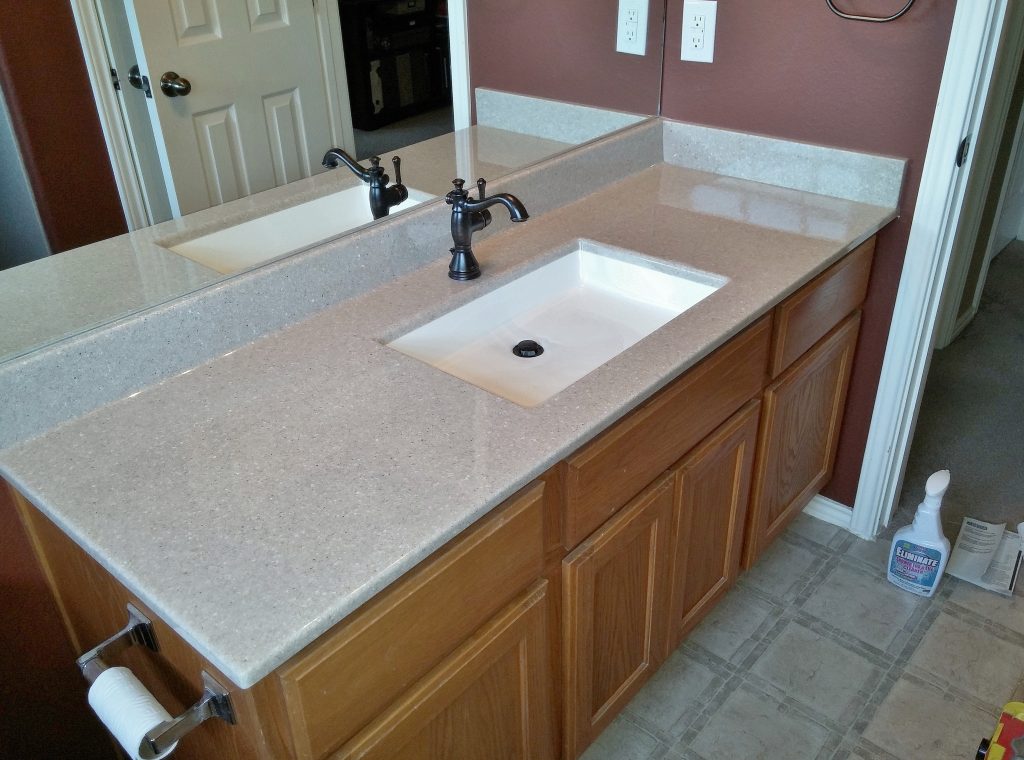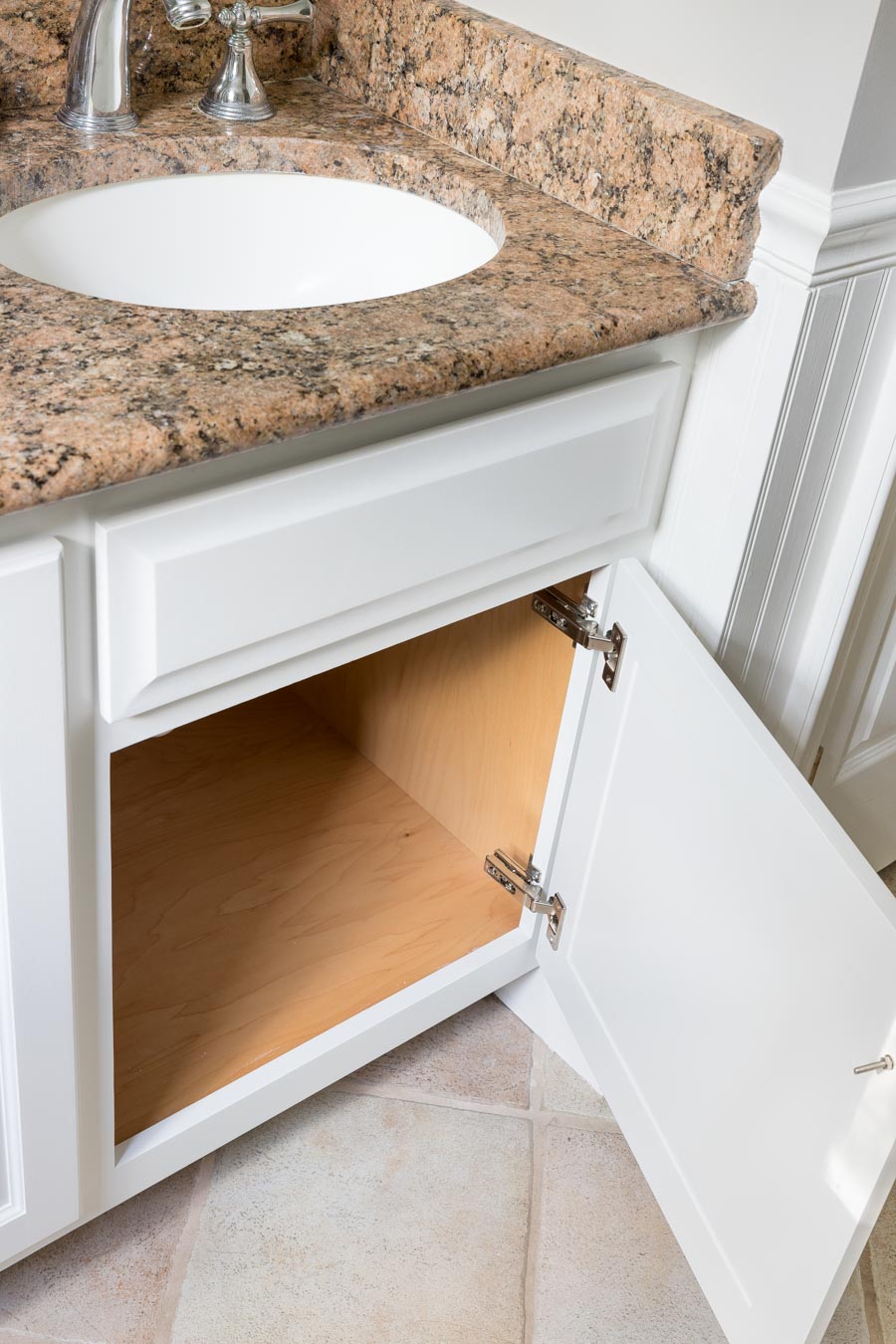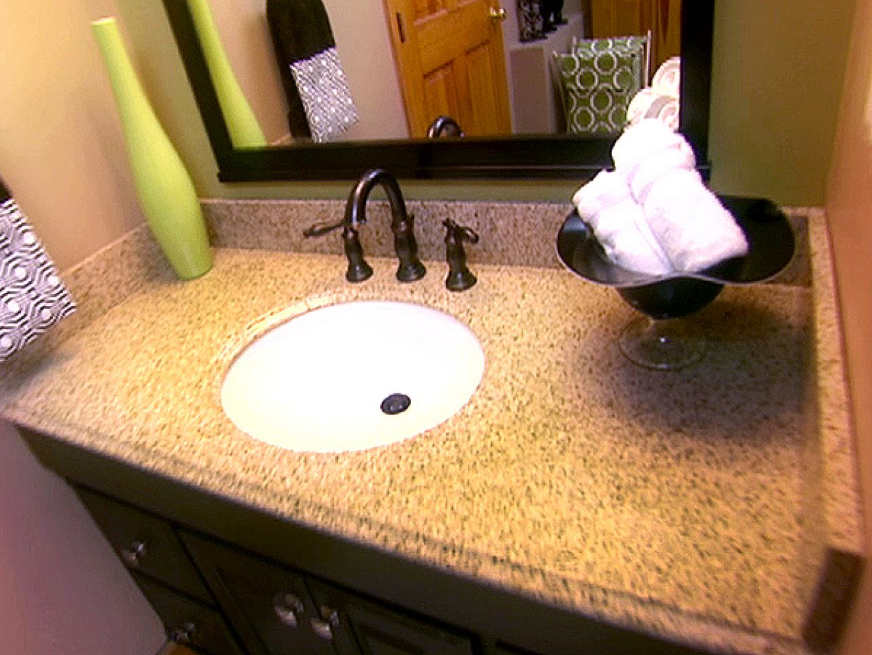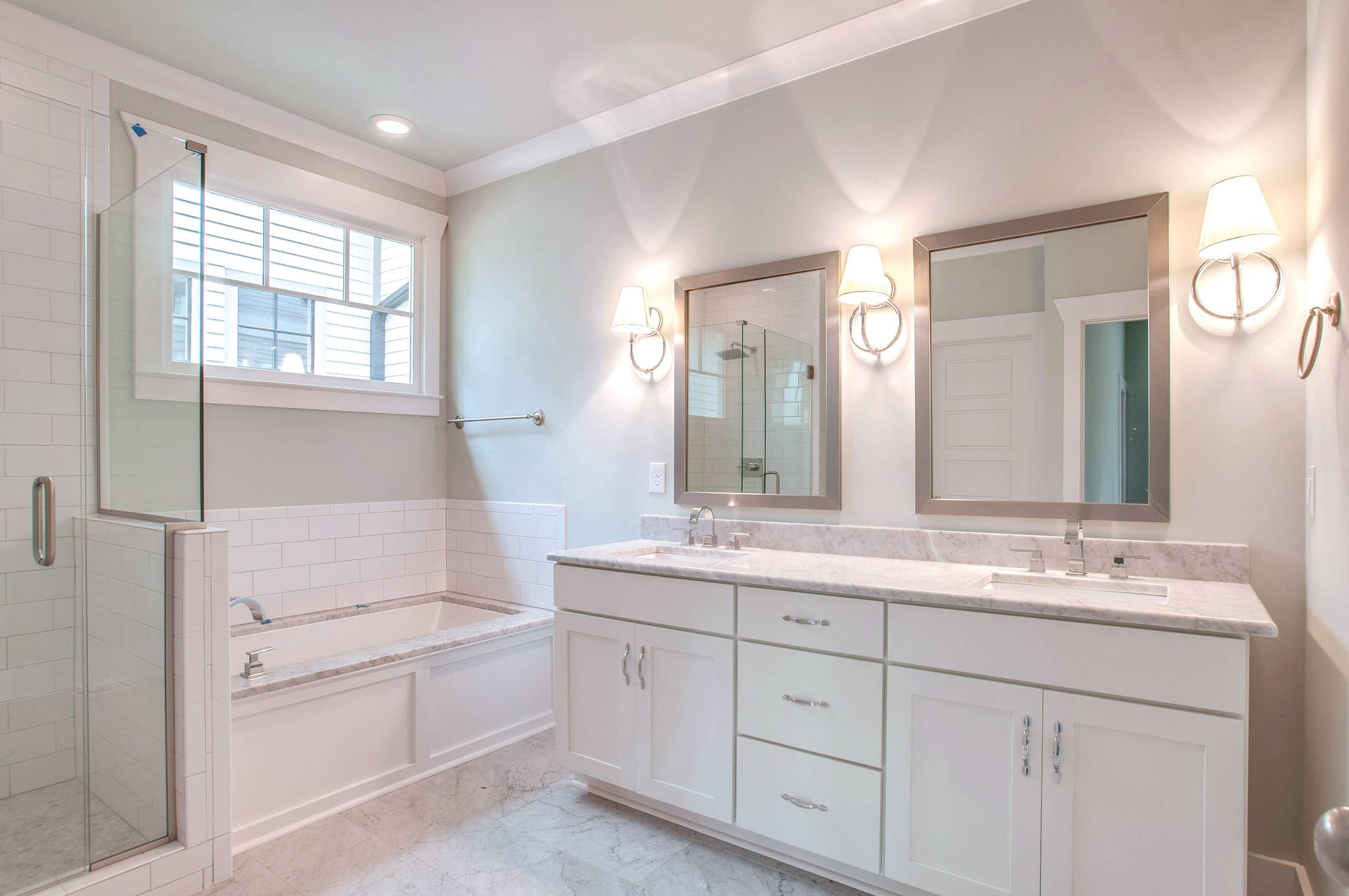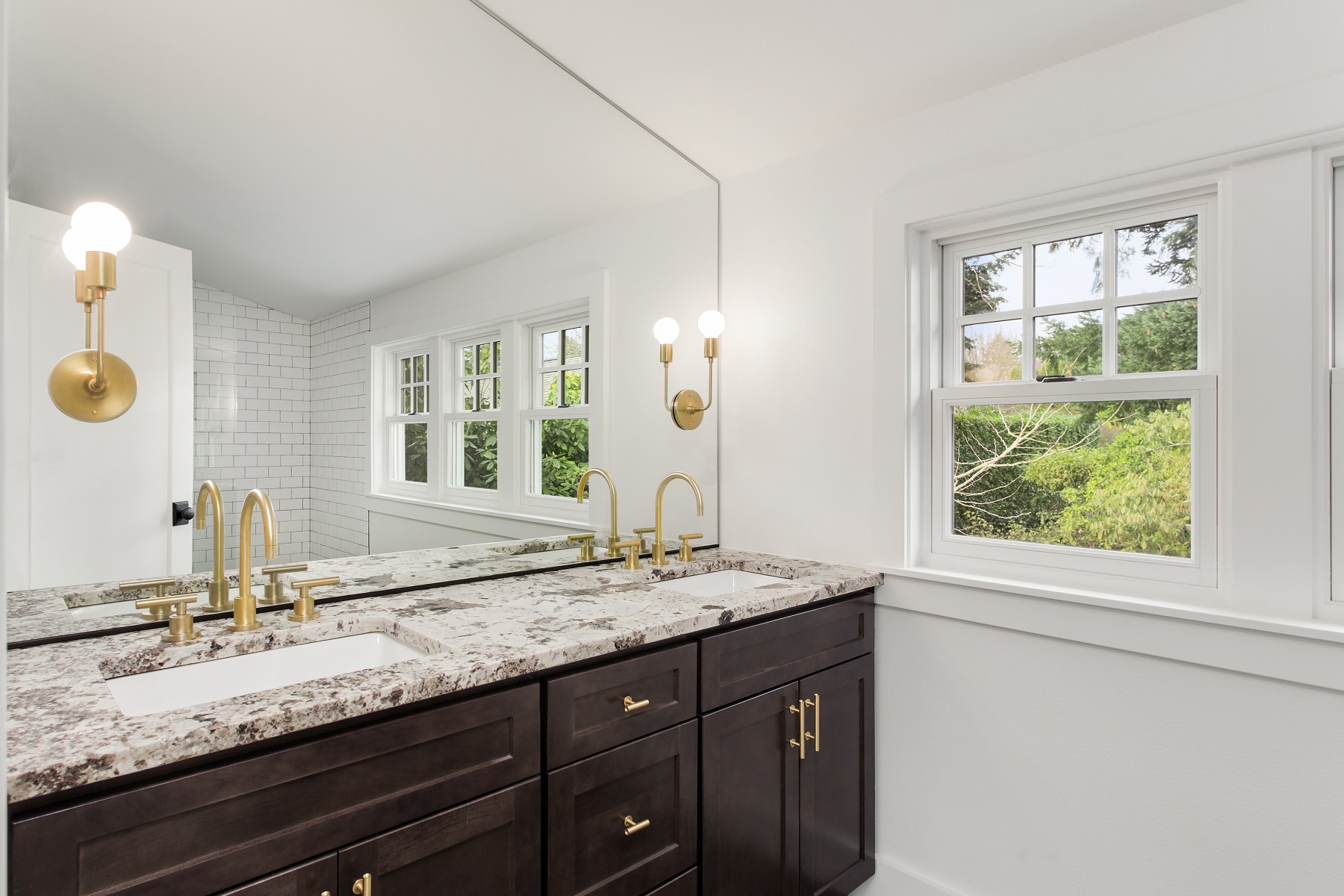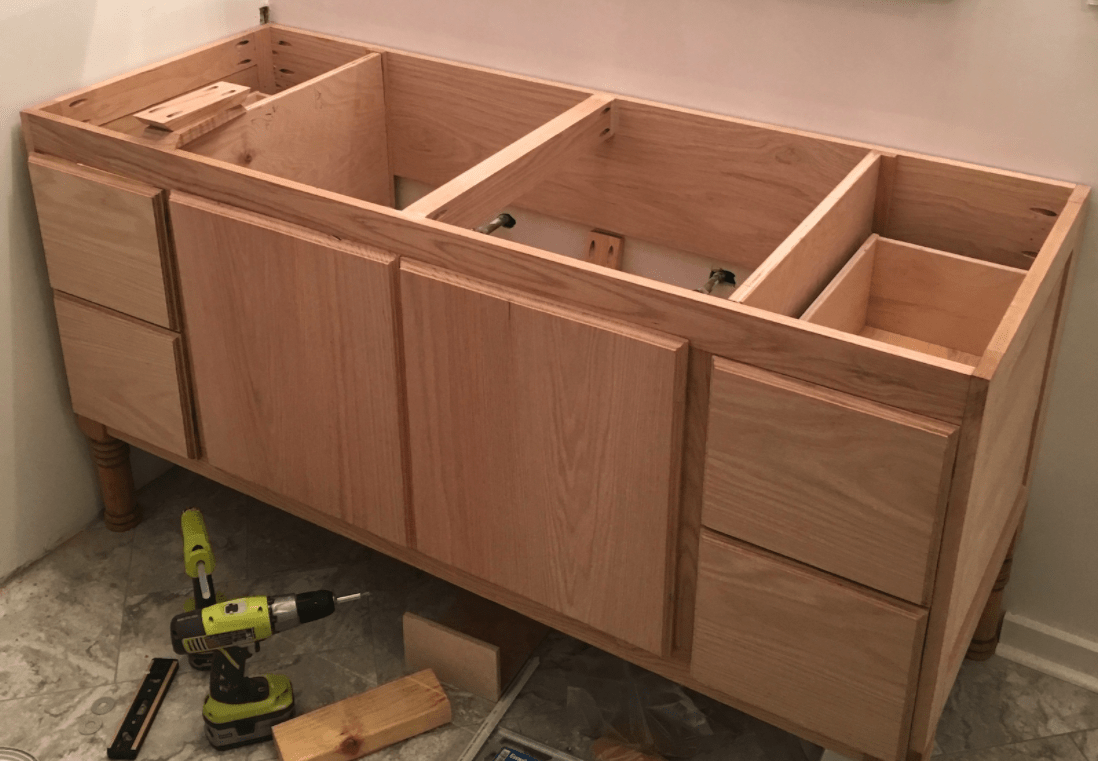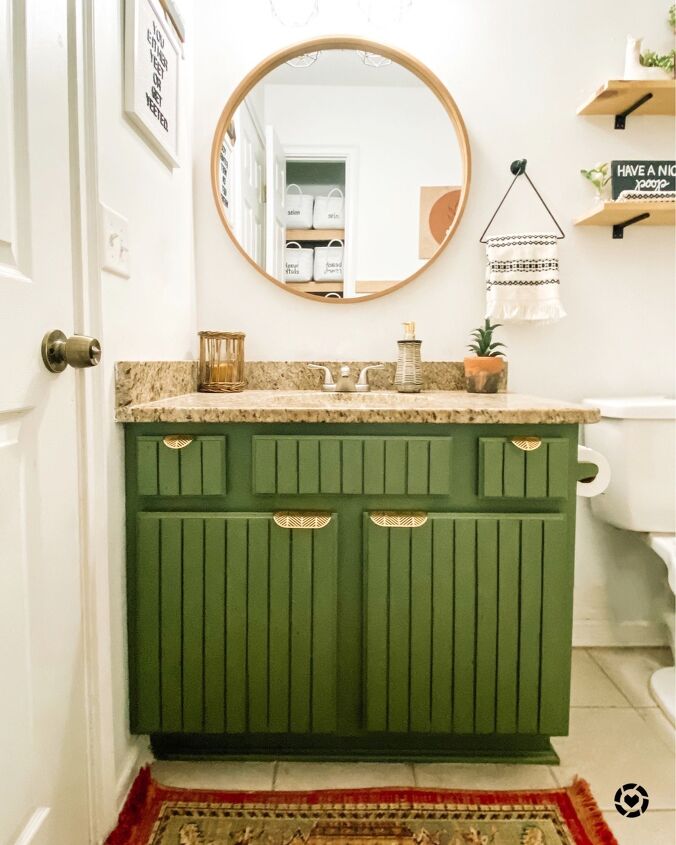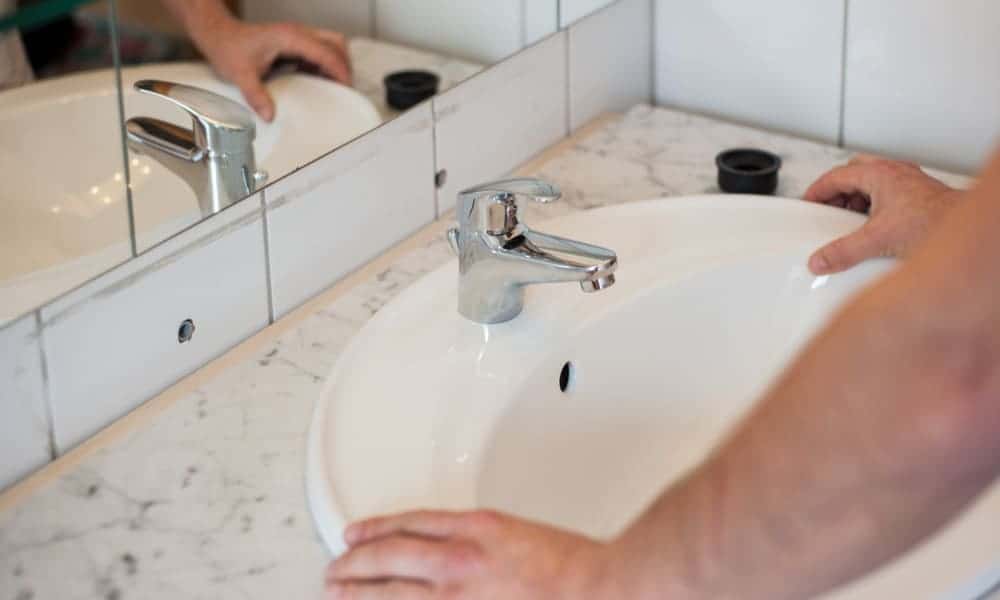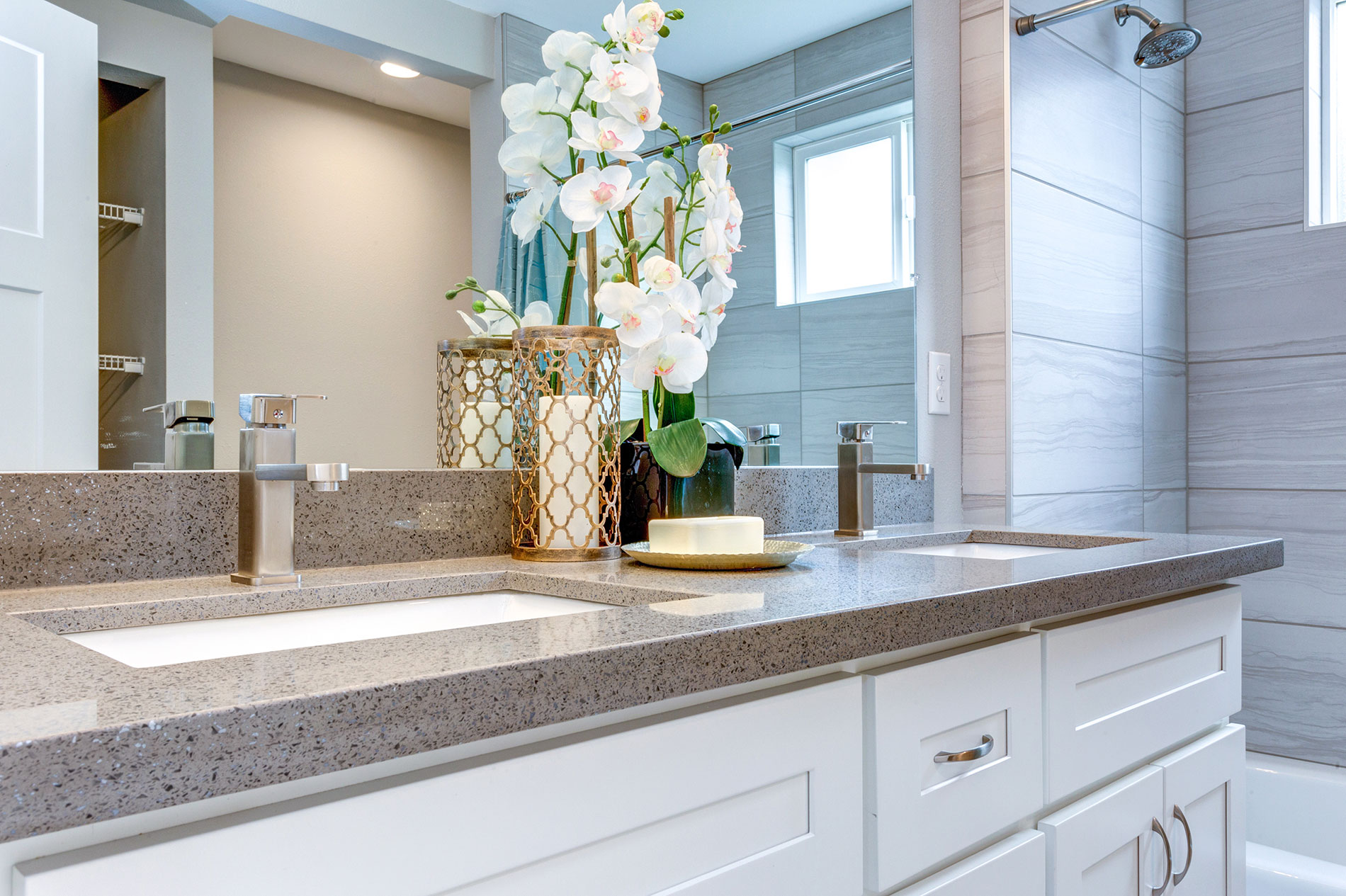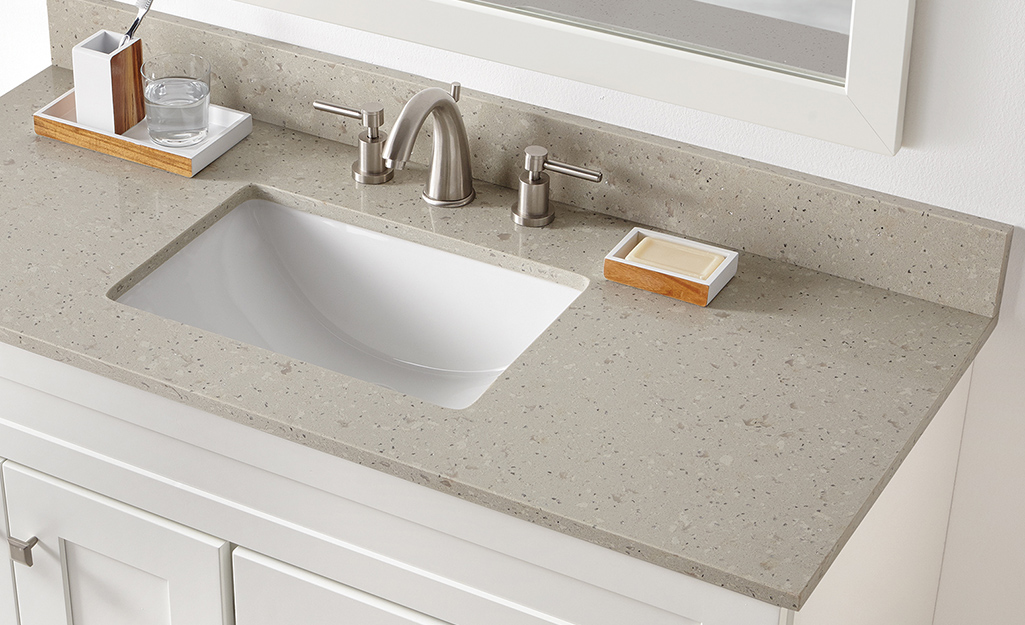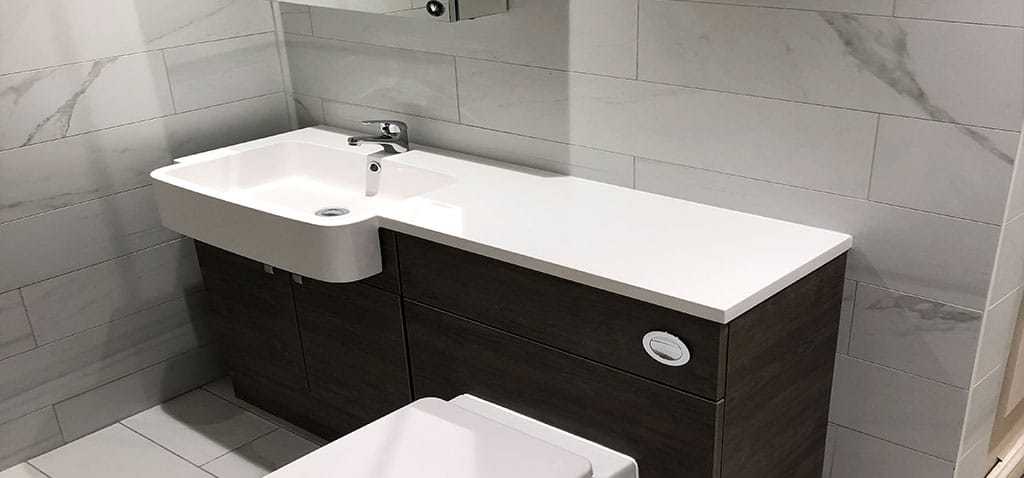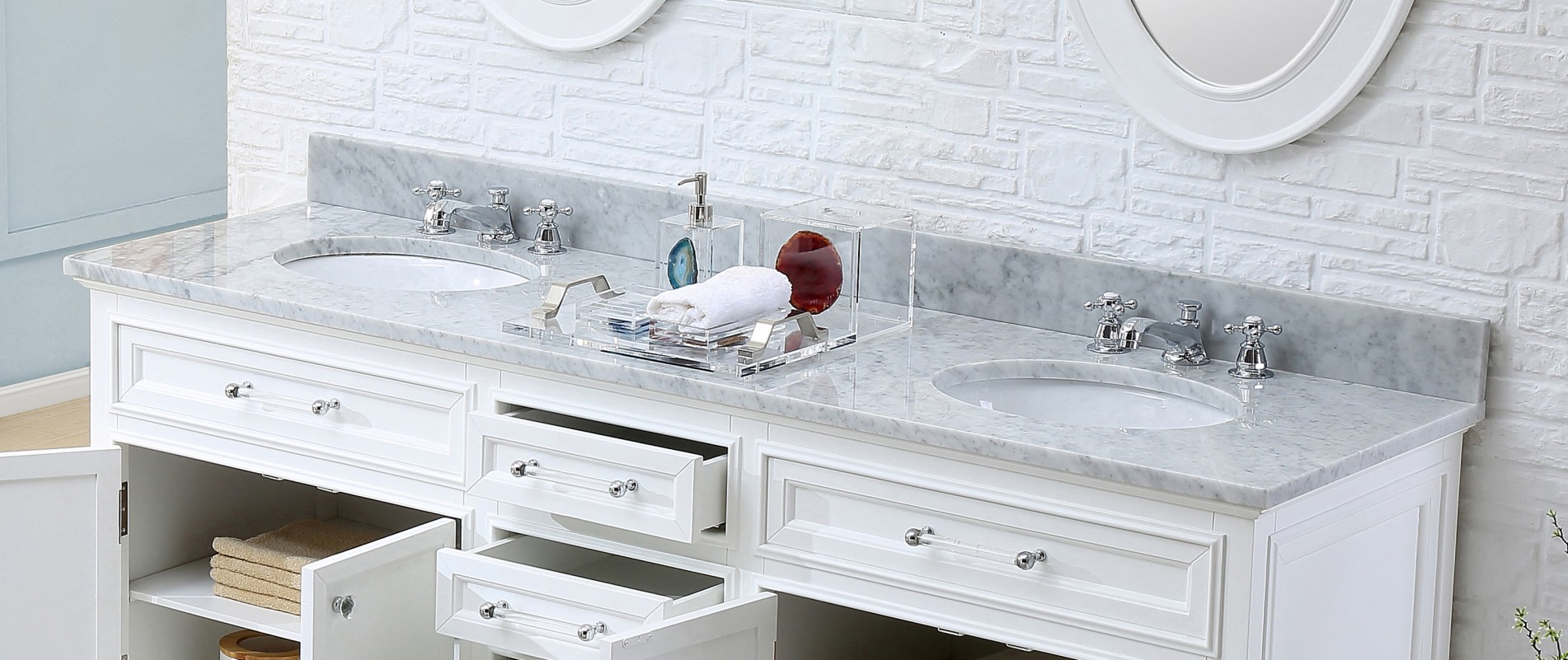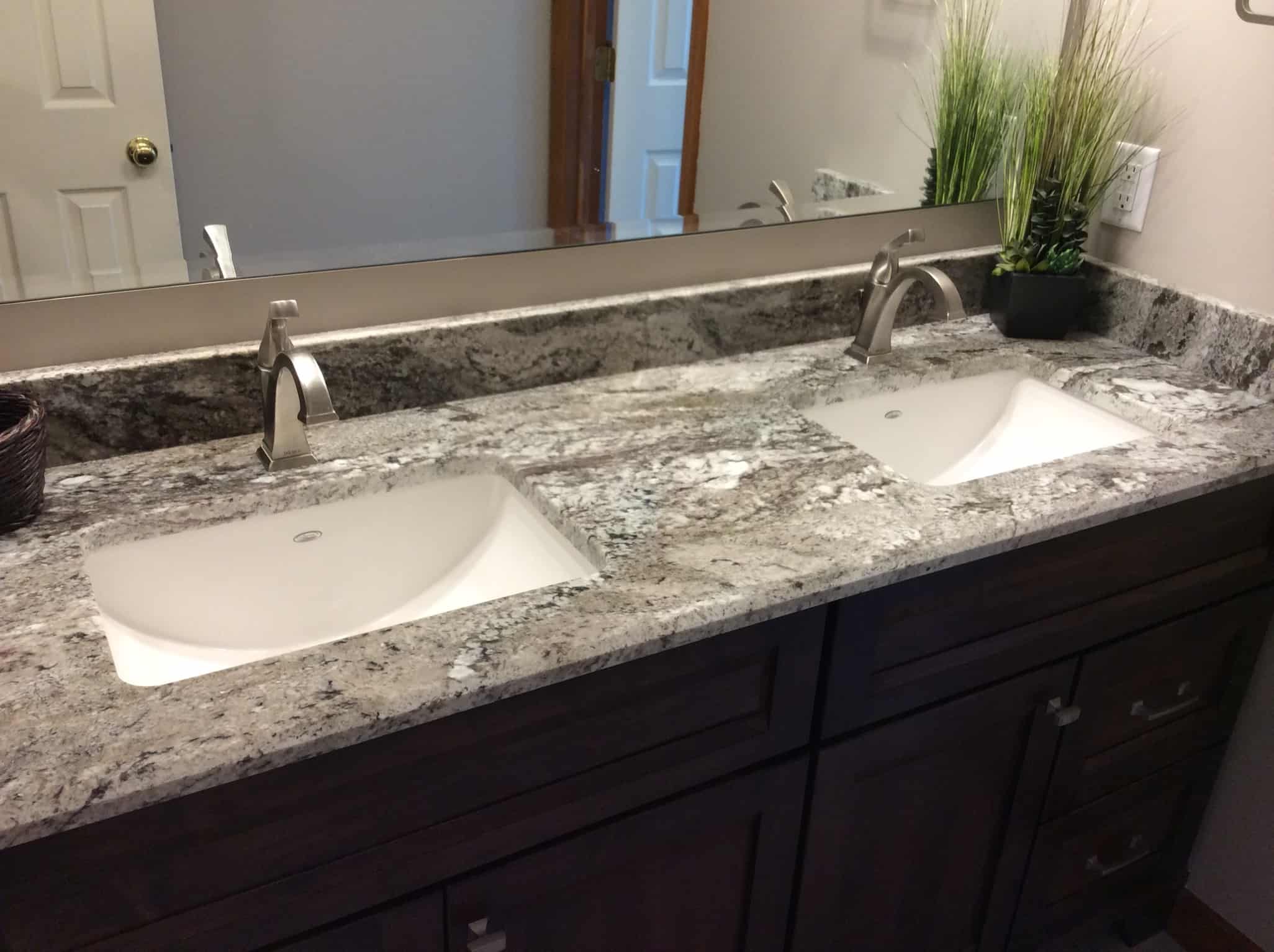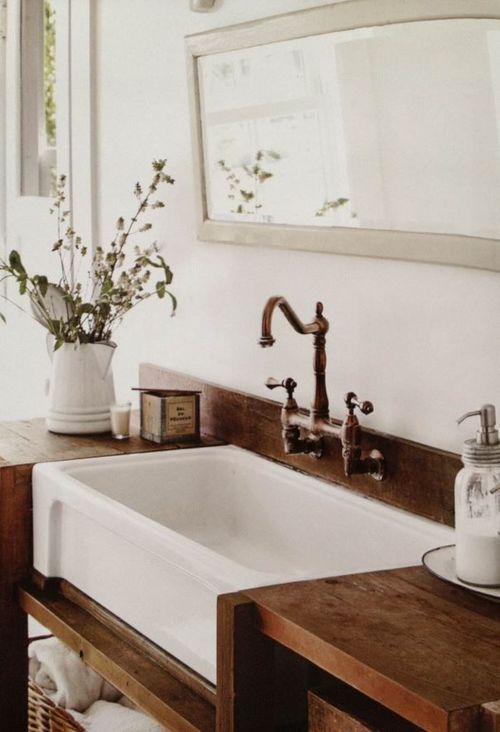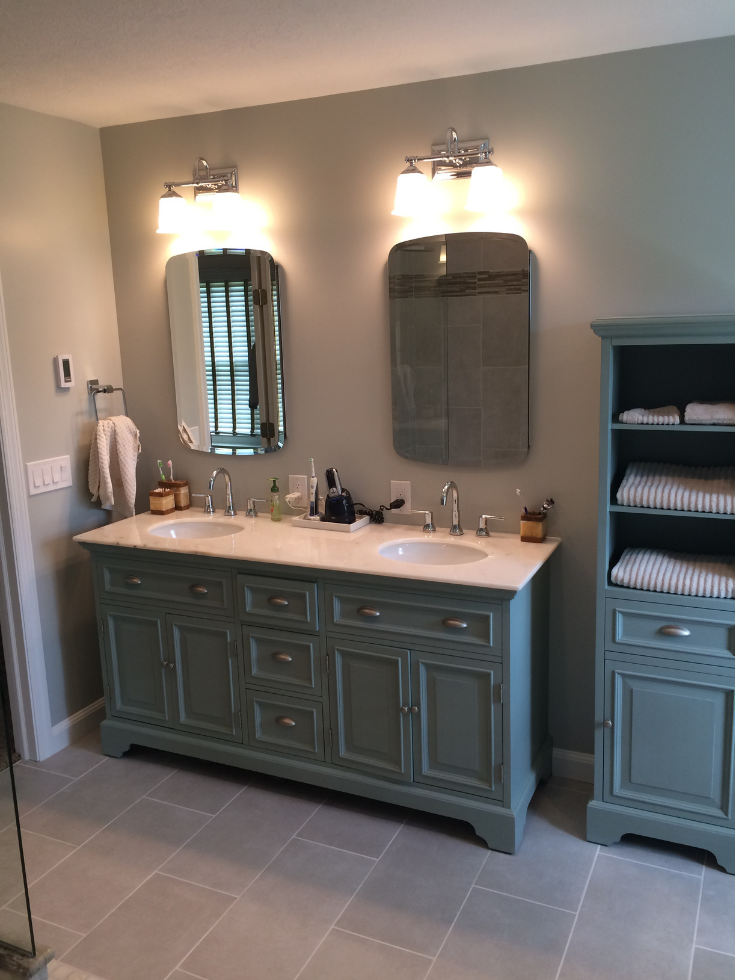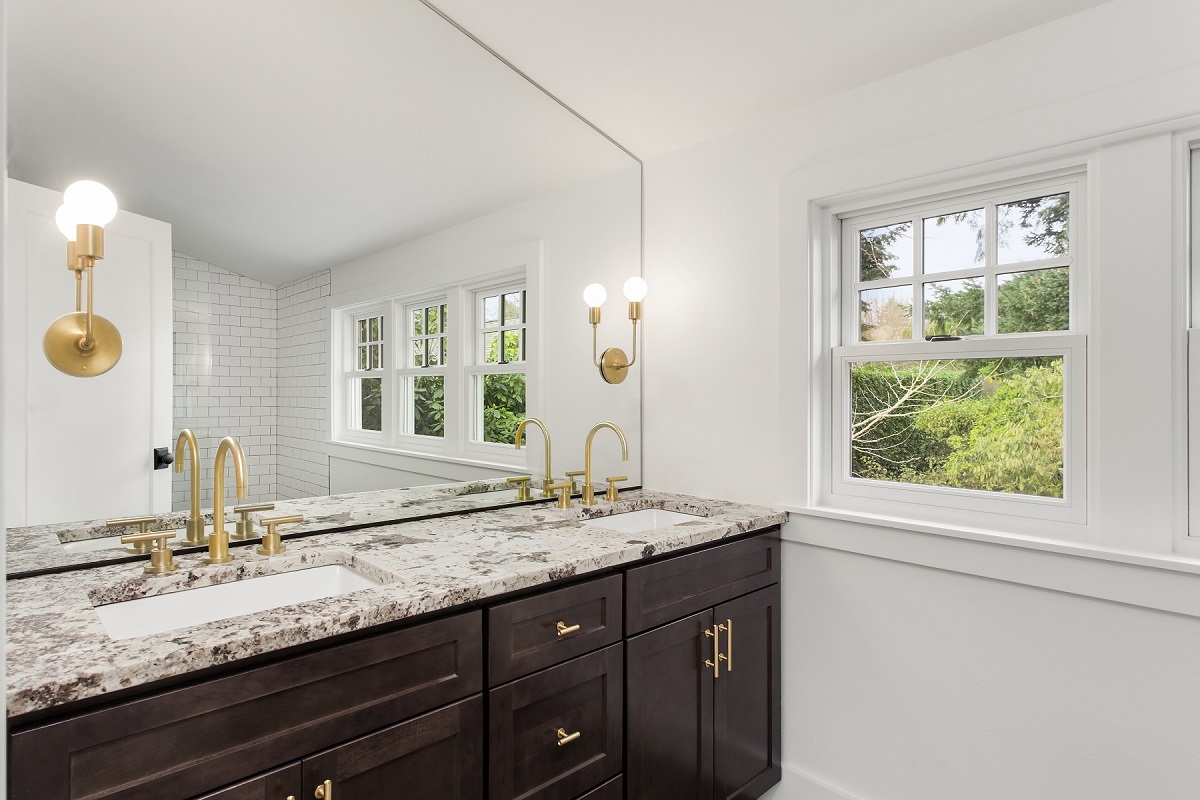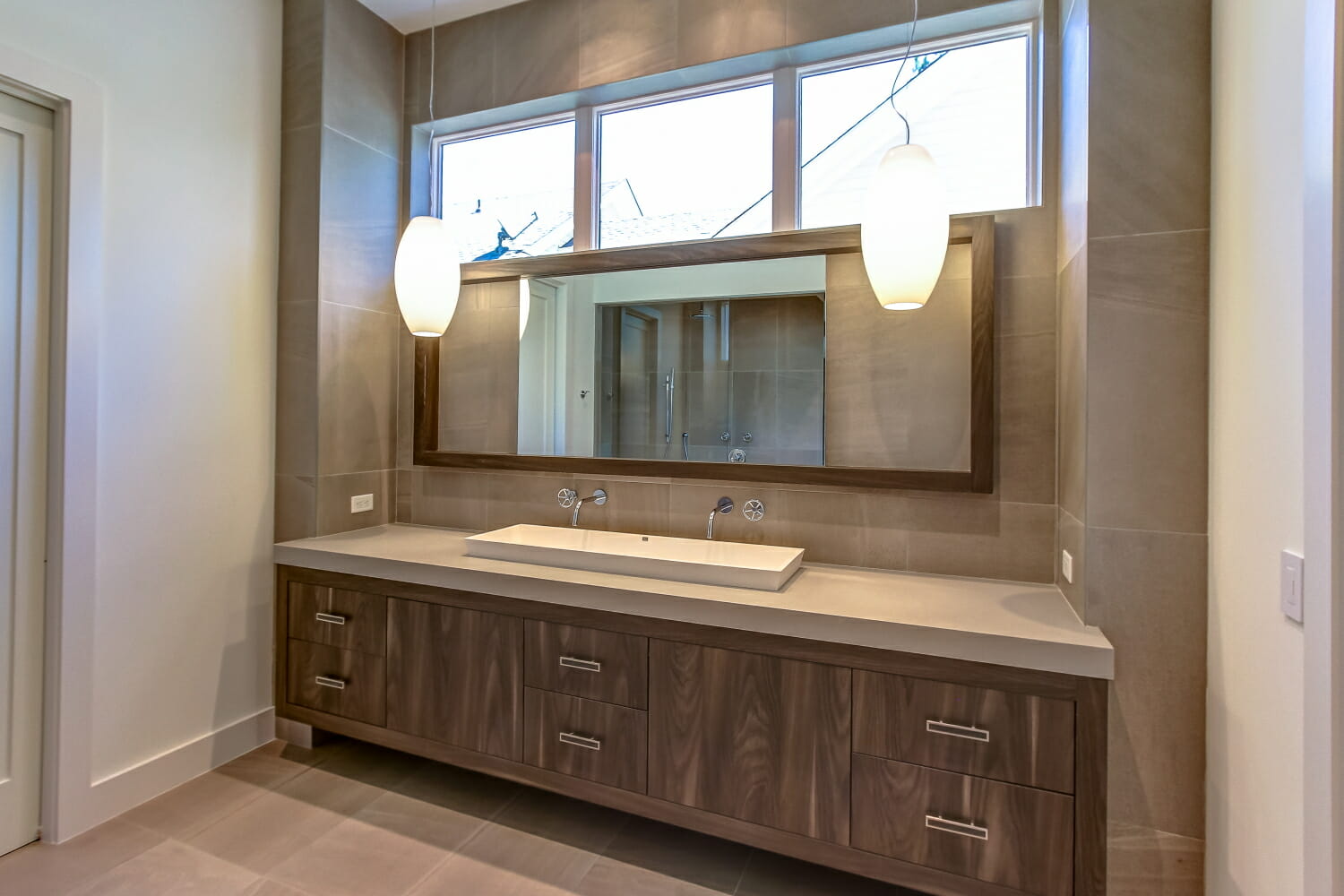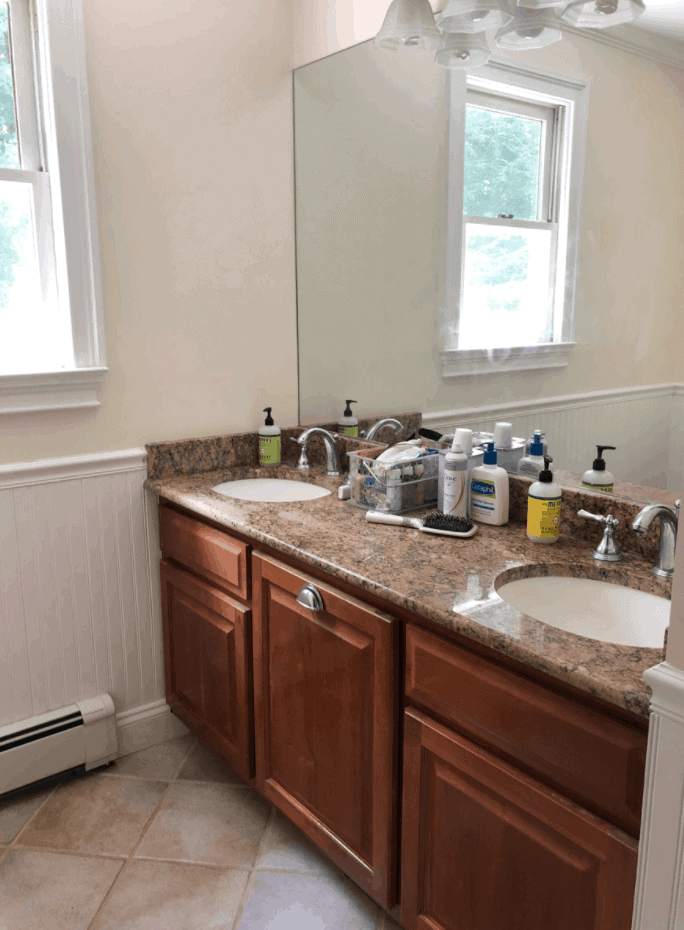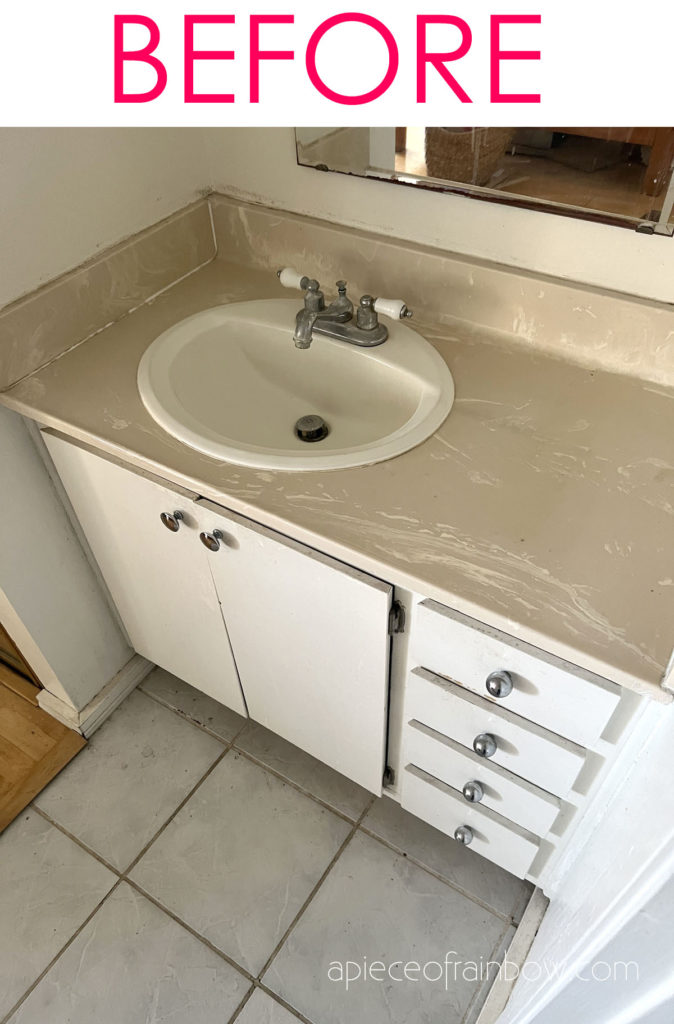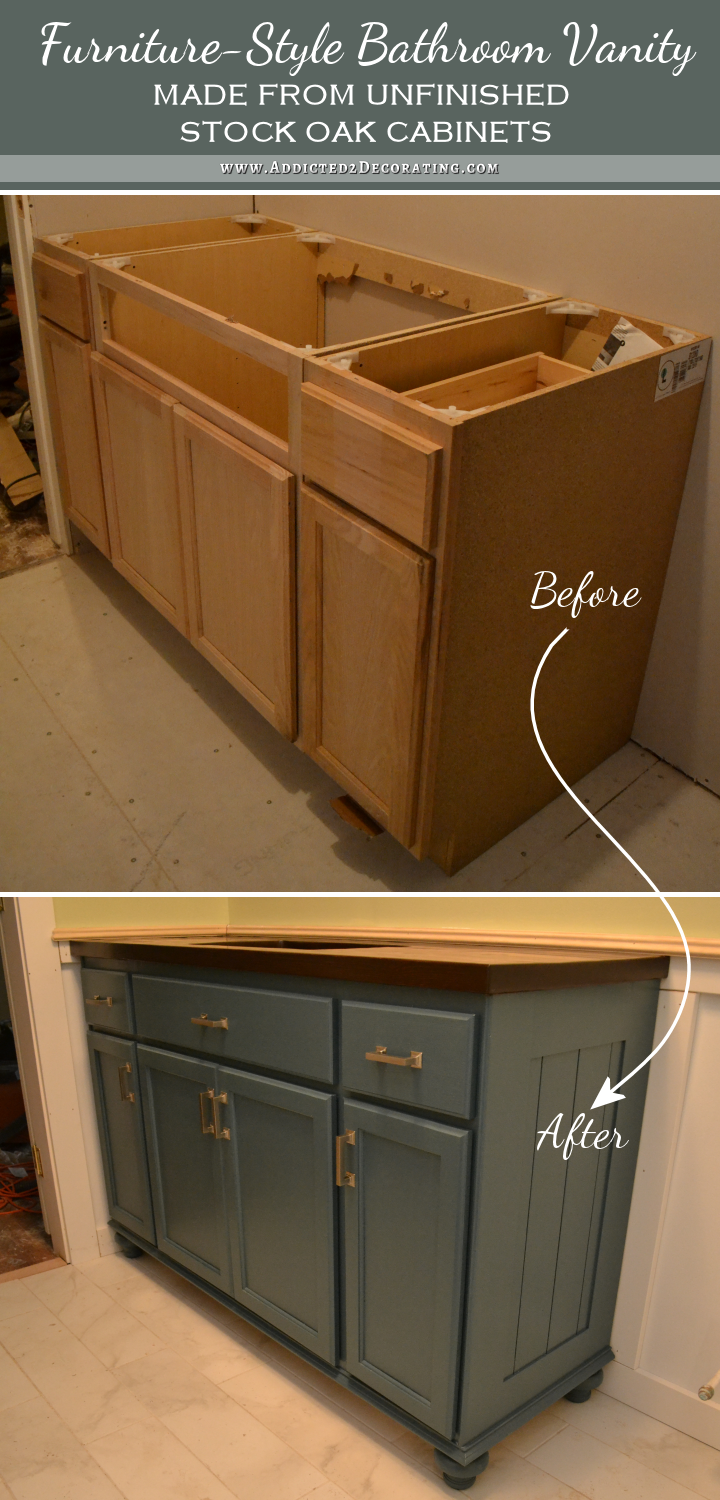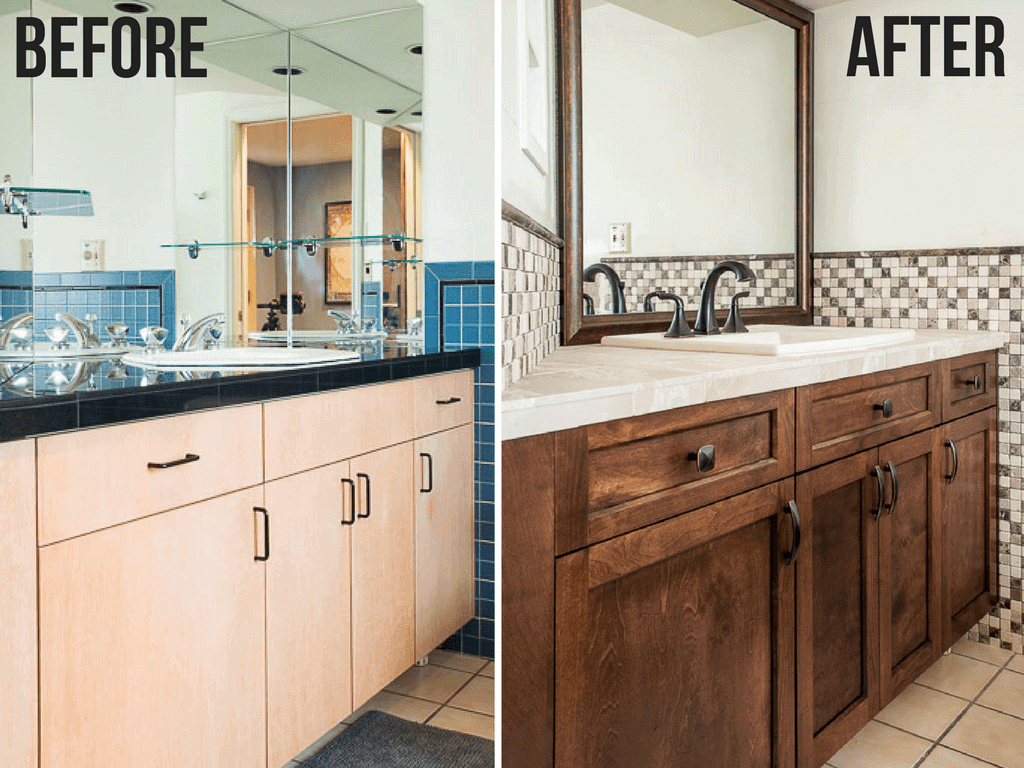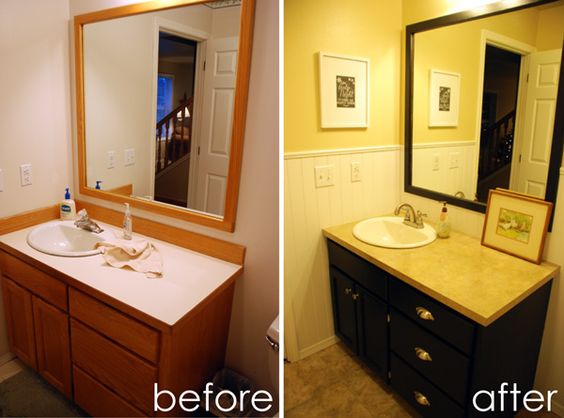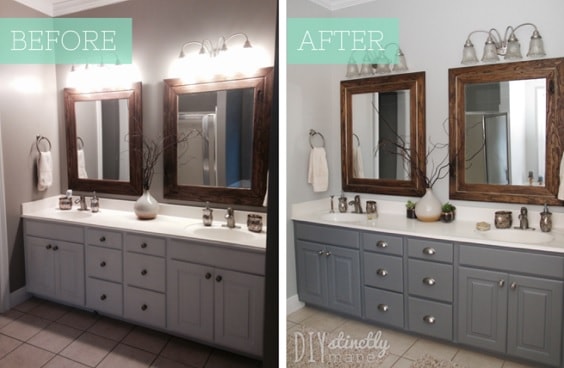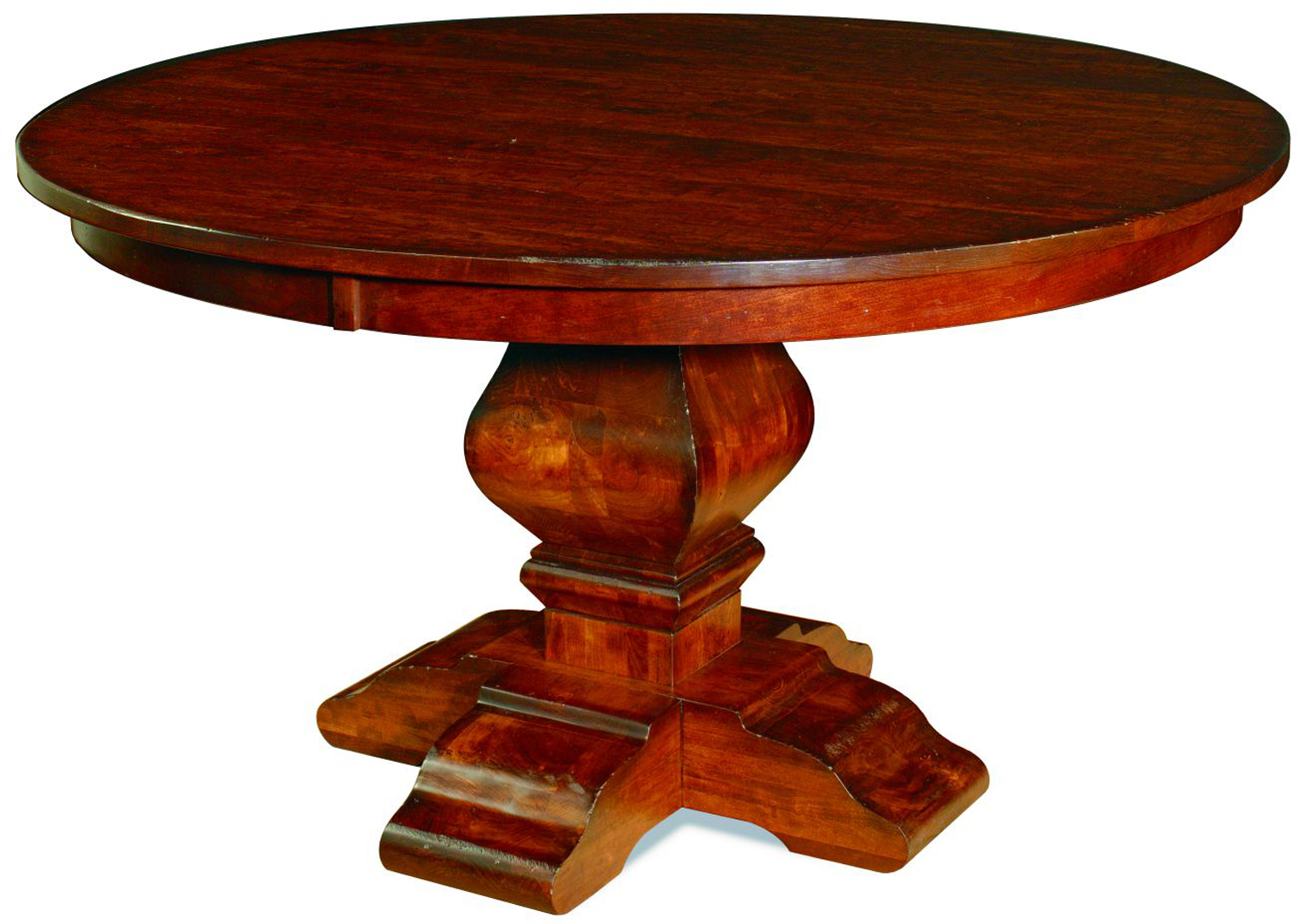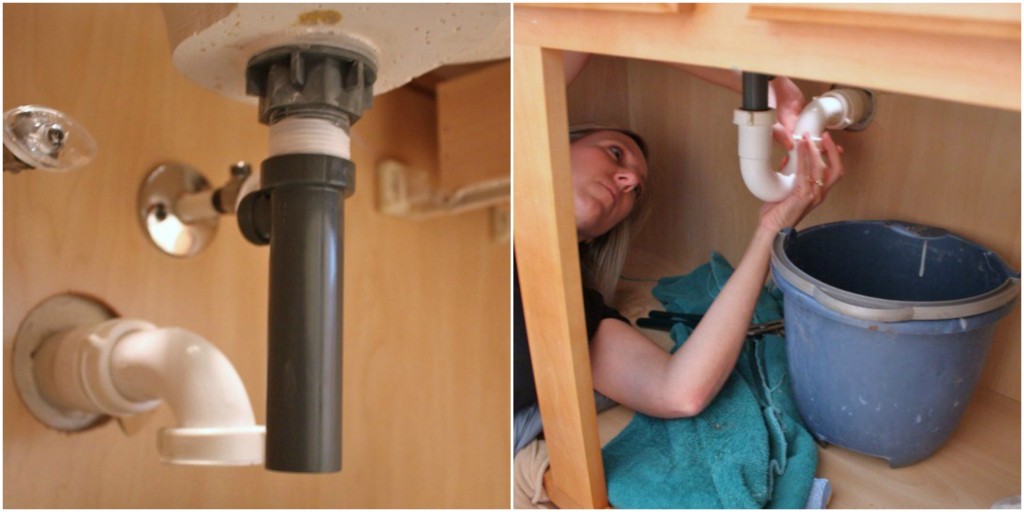Replacing Countertop On Bathroom Vanity
Replacing the countertop on your bathroom vanity is a great way to give your bathroom a fresh new look. Whether you’re tired of your outdated vanity top or simply want to upgrade to a more durable or stylish material, this project can make a big impact on the overall appearance of your bathroom. In this article, we’ll discuss everything you need to know about replacing your bathroom vanity countertop, from the materials to use to the common mistakes to avoid.
How to Replace a Bathroom Vanity Countertop
The process of replacing a bathroom vanity countertop may seem daunting, but with the right tools and materials, it can be a fairly straightforward DIY project. Here’s a step-by-step guide to help you through the process:
Step 1: Measure and Remove the Old Countertop
The first step is to measure your existing countertop and make note of any cuts or adjustments that need to be made for the new one. Then, remove the old countertop by unscrewing it from the vanity base and carefully prying it off. Be sure to turn off the water supply and disconnect the plumbing before removing the countertop.
Step 2: Prepare the Vanity Base
Once the old countertop is removed, inspect the vanity base for any damage or repairs that need to be made. This is also a good time to paint or refinish the base if desired.
Step 3: Cut and Install the New Countertop
Using your measurements, cut the new countertop to fit over the vanity base. If necessary, cut out holes for the sink and faucet. Then, carefully place the new countertop onto the vanity base and secure it with adhesive or screws.
Step 4: Reconnect Plumbing and Install Sink and Faucet
Once the countertop is securely in place, reconnect the plumbing and install the sink and faucet. Be sure to follow the manufacturer’s instructions for proper installation.
Step 5: Seal the Edges
To prevent water damage and give your countertop a professional finish, seal the edges of the countertop with a silicone sealant.
DIY Bathroom Vanity Countertop Replacement
While hiring a professional to replace your bathroom vanity countertop may seem like the easier option, it can also be quite expensive. If you’re looking to save some money and have a little DIY experience, replacing the countertop yourself can be a great project to take on. Plus, you’ll have the satisfaction of knowing you did it yourself!
Before starting the project, be sure to research the materials and tools you’ll need and have a clear plan in place. It’s also helpful to watch tutorials or ask for advice from friends or family who have completed similar projects.
Step-by-Step Guide for Replacing Bathroom Vanity Countertop
As mentioned earlier, replacing a bathroom vanity countertop can be a fairly straightforward project if you have the right tools and materials. Here’s a more detailed step-by-step guide to help you along the way:
Step 1: Gather Tools and Materials
Before getting started, gather all the necessary tools and materials. This may include a tape measure, circular saw, drill, screwdriver, adhesive, silicone sealant, and the new countertop material.
Step 2: Remove Old Countertop
Turn off the water supply and disconnect the plumbing. Then, carefully remove the old countertop by unscrewing it from the vanity base and prying it off.
Step 3: Prepare the Vanity Base
Inspect the vanity base for any damage or repairs that need to be made. This is also a good time to paint or refinish the base if desired.
Step 4: Cut and Install New Countertop
Using your measurements, cut the new countertop to fit over the vanity base. Then, carefully place the new countertop onto the base and secure it with adhesive or screws.
Step 5: Reconnect Plumbing and Install Sink and Faucet
Reconnect the plumbing and install the sink and faucet according to the manufacturer’s instructions.
Step 6: Seal the Edges
To prevent water damage and give your countertop a professional finish, seal the edges with a silicone sealant.
Best Materials for Bathroom Vanity Countertop Replacement
When it comes to choosing the right material for your bathroom vanity countertop, there are many options to consider. Some of the most popular materials include granite, marble, quartz, tile, and laminate. Each material has its own pros and cons in terms of durability, maintenance, and price, so it’s important to do your research and choose the best option for your budget and style preferences.
Pro tip: If you’re looking for a budget-friendly option, consider using a remnant piece of stone or tile from a previous project.
Budget-Friendly Options for Replacing Bathroom Vanity Countertop
If you’re working with a tight budget, there are still plenty of options for replacing your bathroom vanity countertop without breaking the bank. Some budget-friendly materials include laminate, tile, and solid surface materials. You can also save money by choosing a pre-made vanity top instead of a custom-made one.
Pro tip: Look for sales or clearance items at home improvement stores for even more savings.
Tips for Choosing the Right Bathroom Vanity Countertop Replacement
When choosing a new countertop for your bathroom vanity, there are a few key factors to consider:
Material: As mentioned earlier, each material has its own pros and cons, so consider your budget, maintenance preferences, and style when choosing the right material for your bathroom.
Size and Shape: Be sure to measure your existing countertop and choose a new one that will fit properly on your vanity base. You should also consider the shape of your sink and faucet and ensure they will fit on the new countertop.
Style: Your bathroom vanity is a focal point in the room, so choose a countertop that complements your overall design aesthetic. Consider the color, pattern, and texture of the material and how it will look in your bathroom.
Budget: As mentioned earlier, the cost of materials can vary greatly for bathroom vanity countertops, so it’s important to determine your budget before making a decision.
Common Mistakes to Avoid When Replacing Bathroom Vanity Countertop
While replacing a bathroom vanity countertop may seem like a simple task, there are a few common mistakes to avoid:
Not measuring properly: Accurate measurements are crucial when replacing a countertop. Be sure to measure multiple times and make note of any cuts or adjustments that need to be made.
Not turning off water supply: Before removing the old countertop, be sure to turn off the water supply and disconnect the plumbing to avoid any leaks or damage.
Not securing countertop properly: Whether using adhesive or screws, be sure to secure the new countertop properly to prevent any movement or damage over time.
Professional vs. DIY Bathroom Vanity Countertop Replacement
Deciding whether to hire a professional or tackle the project yourself ultimately depends on your experience and budget. While hiring a professional may save you time and effort, it can also be quite expensive. On the other hand, DIY projects can be a great way to save money and learn new skills. Just be sure to do your research and have a clear plan in place before starting the project.
Before and After: Bathroom Vanity Countertop Replacement Inspiration
If you’re still on the fence about replacing your bathroom vanity countertop, take a look at some before and after photos for inspiration. You’ll be amazed at how much of a difference a new countertop can make in the overall appearance of your bathroom.
Bonus tip: Consider updating other elements in your bathroom, such as the hardware or lighting, to complete the transformation.
In conclusion, replacing your bathroom vanity countertop can be a rewarding and cost-effective project that can greatly enhance the look and functionality of your bathroom. By following these tips and guidelines, you can successfully complete the project and enjoy a beautiful new countertop in your bathroom. Happy renovating!
Why You Should Consider Replacing Your Bathroom Vanity Countertop
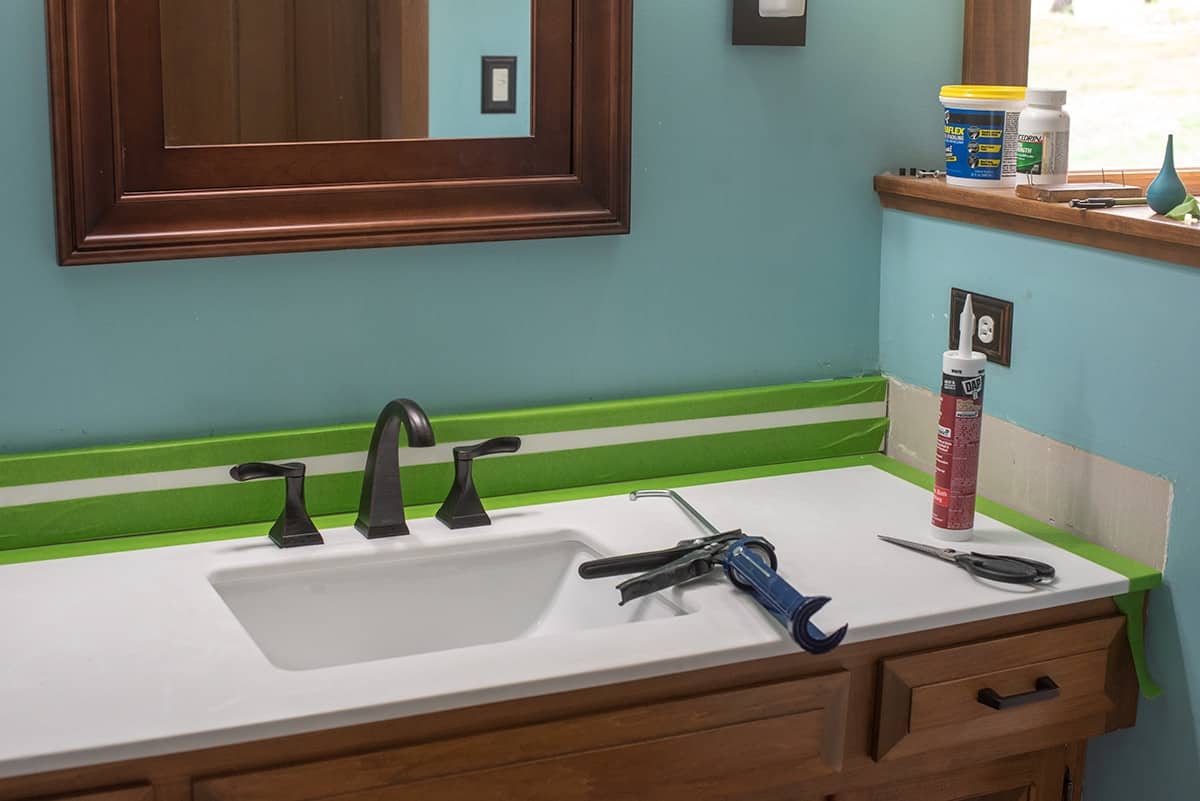
Enhance the Aesthetics of Your Bathroom
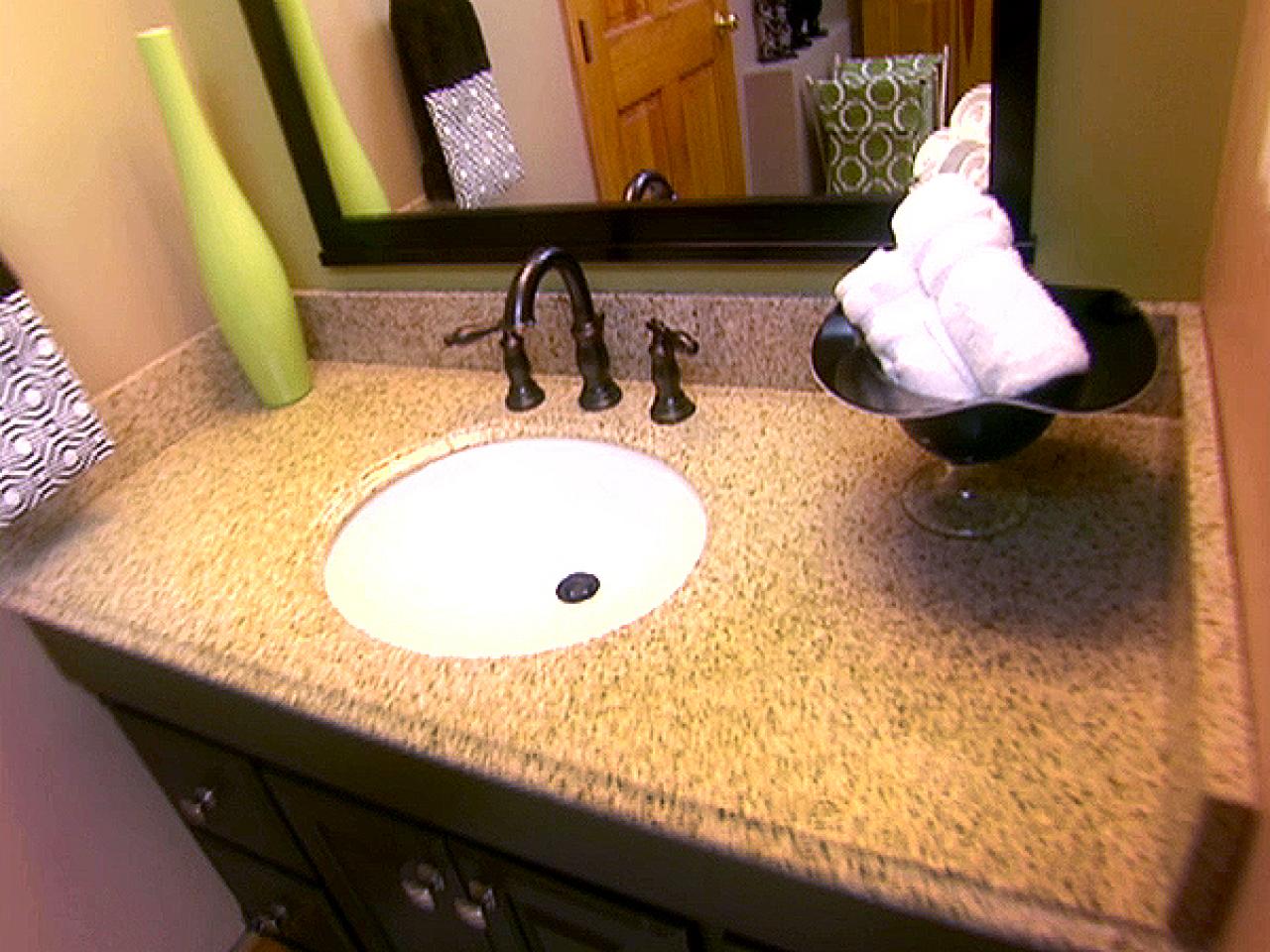 Replacing the countertop on your bathroom vanity can instantly transform the look and feel of your bathroom. The countertop is often one of the first things that catch your eye when you walk into a bathroom. By choosing a new
custom countertop
that complements your existing design elements or adds a pop of color, you can completely revamp the overall appearance of your bathroom. Whether you want to create a modern and sleek look or a cozy and rustic feel, the right countertop can help you achieve your desired style.
Replacing the countertop on your bathroom vanity can instantly transform the look and feel of your bathroom. The countertop is often one of the first things that catch your eye when you walk into a bathroom. By choosing a new
custom countertop
that complements your existing design elements or adds a pop of color, you can completely revamp the overall appearance of your bathroom. Whether you want to create a modern and sleek look or a cozy and rustic feel, the right countertop can help you achieve your desired style.
Upgrade to More Durable Materials
Increase the Value of Your Home
 Replacing the countertop on your bathroom vanity can also add value to your home. A
beautiful and functional bathroom
is a highly sought after feature for potential buyers and can significantly increase the overall value of your property. By investing in a high-quality countertop, you can make your bathroom a selling point and potentially
increase the resale value
of your home.
Replacing the countertop on your bathroom vanity can also add value to your home. A
beautiful and functional bathroom
is a highly sought after feature for potential buyers and can significantly increase the overall value of your property. By investing in a high-quality countertop, you can make your bathroom a selling point and potentially
increase the resale value
of your home.
Improve Functionality and Storage Space
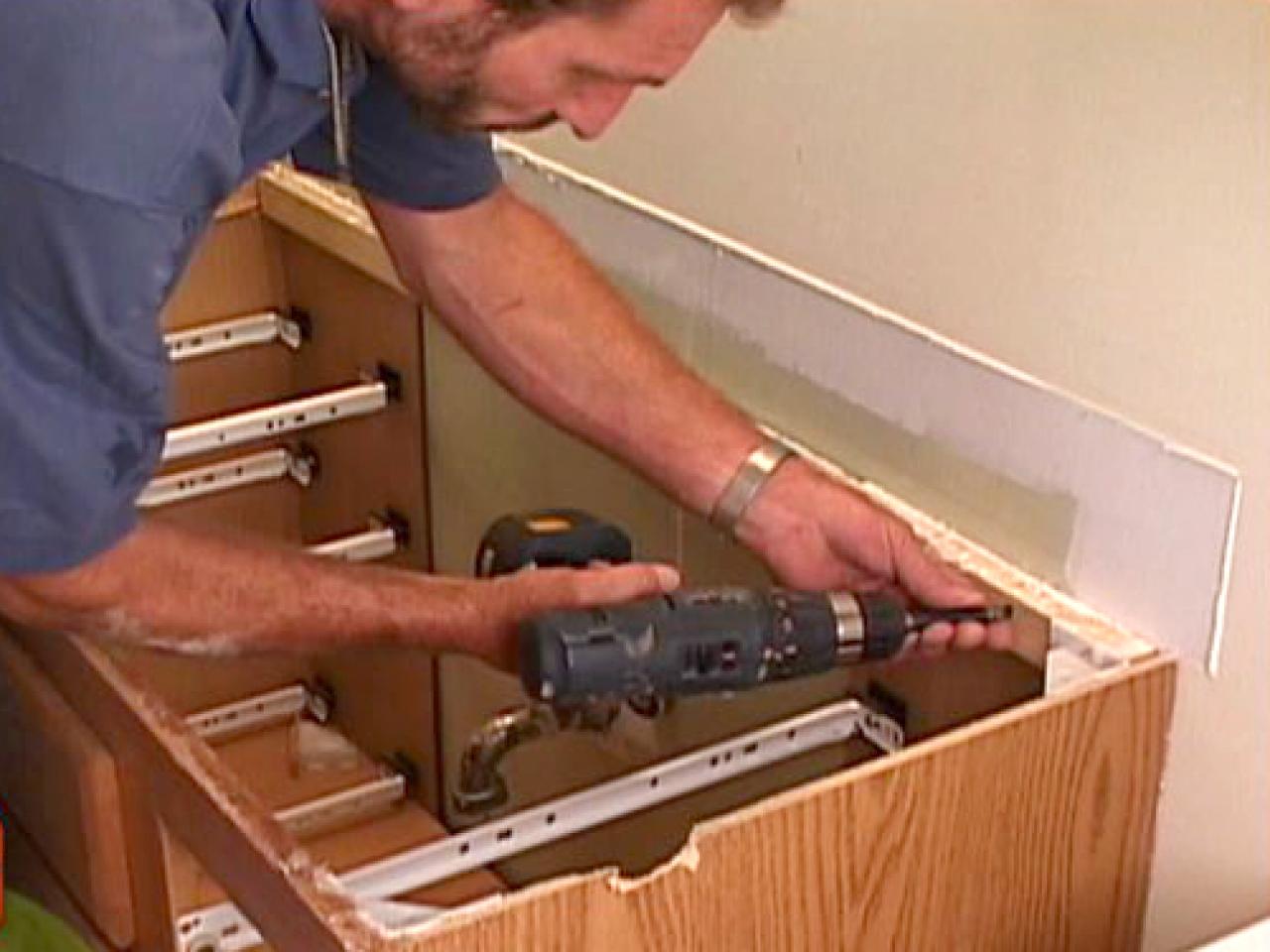 The right countertop can not only enhance the look of your bathroom but also improve its functionality. If your current countertop is too small or lacks sufficient storage space, consider replacing it with a larger,
multi-tiered countertop
or one with built-in storage options. This can help you keep your bathroom organized and clutter-free while also providing more surface area for daily use.
In conclusion, replacing the countertop on your bathroom vanity is a simple yet effective way to upgrade the overall look and functionality of your bathroom. With the right choice of materials, design, and storage options, you can transform your bathroom into a beautiful and practical space. So why wait? Consider replacing your bathroom vanity countertop today and enjoy the many benefits it has to offer.
The right countertop can not only enhance the look of your bathroom but also improve its functionality. If your current countertop is too small or lacks sufficient storage space, consider replacing it with a larger,
multi-tiered countertop
or one with built-in storage options. This can help you keep your bathroom organized and clutter-free while also providing more surface area for daily use.
In conclusion, replacing the countertop on your bathroom vanity is a simple yet effective way to upgrade the overall look and functionality of your bathroom. With the right choice of materials, design, and storage options, you can transform your bathroom into a beautiful and practical space. So why wait? Consider replacing your bathroom vanity countertop today and enjoy the many benefits it has to offer.





